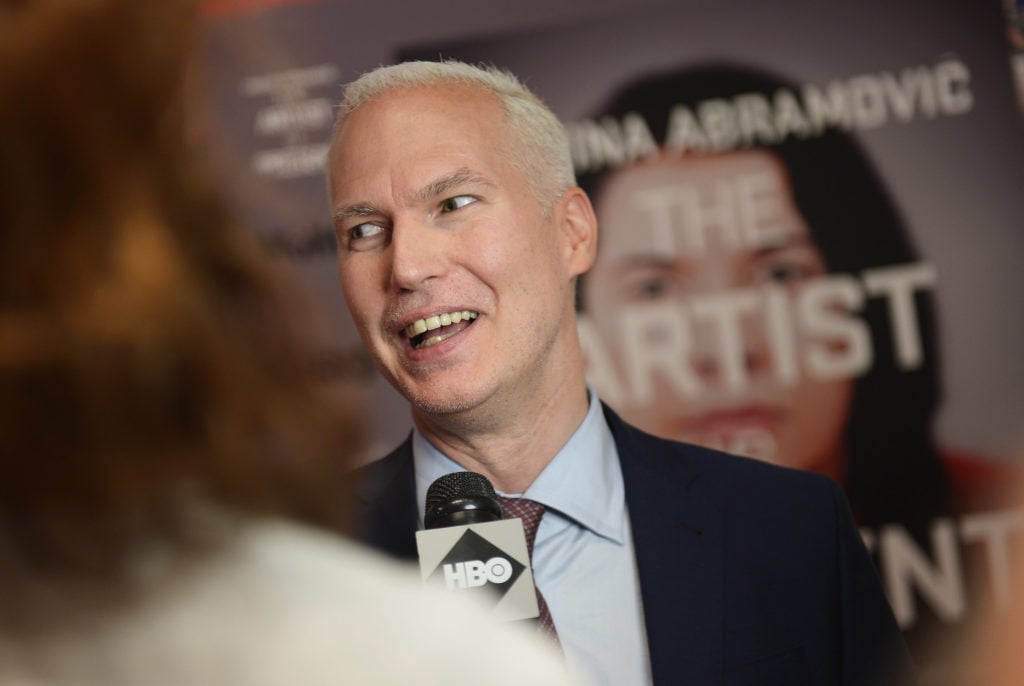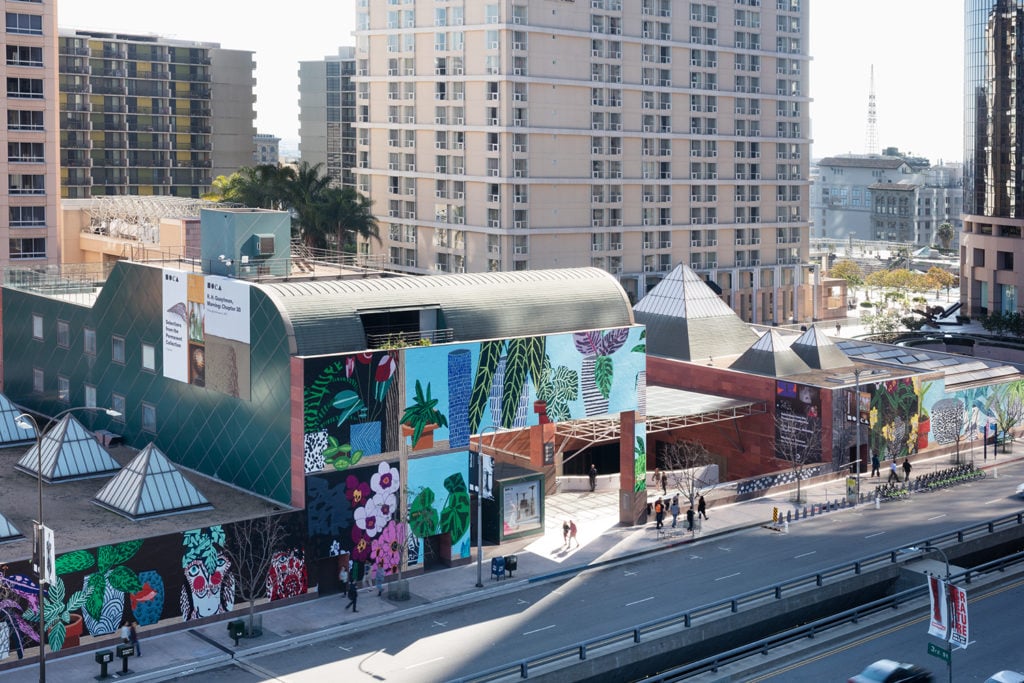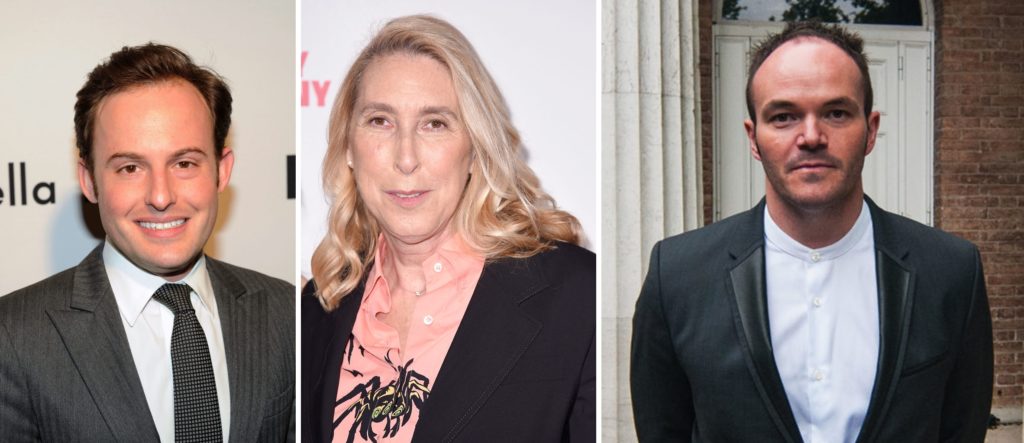Art World
Welcome to Klaus Angeles: 5 Pieces of Advice for MOCA LA’s Incoming Director Klaus Biesenbach
Biesenbach wasn't the only New Yorker considered for the job.

Biesenbach wasn't the only New Yorker considered for the job.

Janelle Zara

The appointment of Klaus Biesenbach as the next director of the Museum of Contemporary Art, Los Angeles, was greeted with many a raised eyebrow. While the longtime director of MoMA PS1 in New York was dubbed “Herr Zeitgeist” when he was appointed in 2009 (a nod to his ability to tap into popular culture), Biesenbach has become synonymous with the New York art-world establishment over the past decade.
The choice of a veteran New Yorker to lead LA’s contemporary art museum put certain corners of the city’s art world on the defensive. New York, in the form of think pieces and travel essays, has recently developed the dismaying habit of praising LA’s rich cultural landscape while simultaneously undercutting its intellectual history. At the New Yorker’s description of MOCA “once again betting on New York expertise to help solve its problems,” for example, LA Times writer Carolina Miranda bristled. “Translation: For the third time in eight years, LA is gonna have to deal with someone who has no real understanding of the nuances of a city that is not all Hollywood,” she tweeted.

The Museum of Contemporary Art in Los Angeles. Photo courtesy of MOCA.
It turn, Biesenbach has done little to assuage locals’ fears of such tone-deafness. In defense of his much-maligned comparison of LA to “the new Berlin” (a “backhanded” and “Eurocentric” comment, according to the LA Times’s Christopher Knight), he clarified that he meant to say that LA has, like Berlin previously, become a center for emerging artists because of its “affordable studios.” (At a fractious moment when studios are both being displaced and acting as agents of displacement, the question is: affordable for whom?) Biesenbach did not return a request for comment.
But Biesenbach, artnet News has learned, was not the only New Yorker on MOCA’s shortlist for director. Among the other candidates interviewed for the job was Scott Rothkopf, the curator and deputy director of programs at the Whitney Museum of American Art in New York, who has swiftly ascended the ranks since he joined in 2009. He organized the museum’s major Jeff Koons survey in 2014 and has been described by the New York Times as “deft with the donor crowd.”
Also on the list was Lisa Phillips, the director of the New York’s New Museum and the second-longest-serving New York City museum director (second to MoMA’s Glenn Lowry). She could have been the first female director in MOCA’s history. Instead, she’ll see through an $80 million capital campaign to double the New Museum’s size.
Christopher Bedford, the director of the Baltimore Museum of Art, was also among those considered, sources say. His Los Angeles experience includes assistant curatorial positions at both the Getty and the Los Angeles County Museum of Art, where his progressive track record began early on with exhibitions that questioned the heteronormative standards of masculinity. Two years into his term in Baltimore, he’s made waves by deaccessioning a number of works by white male artists to make space for those by women and artists of color.

From left: Scott Rothkopf, Lisa Phillips, and Christopher Bedford. Photos via Getty Images.
Notably, none of these candidates is themselves a person of color, nor are they from Los Angeles. All three declined to comment, and the museum declined to confirm any of the candidates interviewed. It has previously said it whittled a list of 40 potential directors down to a final four. In a statement accompanying the announcement, MOCA’s board chair Maria Seferian described the process as a “thorough and international search, conducted with the indispensable participation of our artist trustees.”
To be fair, Los Angeles has (at least) two major New York success stories in LA: Michael Govan, who came to LACMA from the Dia Art Foundation in 2006, and Ann Philbin, who came to the Hammer from the Drawing Center in 1999. (Govan is such a powerhouse fundraiser, in fact, that he offered MOCA tens of millions of dollars to merge with LACMA not once, but twice.)
MOCA, however, has experienced a wildly turbulent decade, and while each new director was heralded as a new beginning for the museum, all three of Biesenbach’s predecessors have left under extremely dark clouds. To correct MOCA’s course, Christopher Knight has offered four deft recommendations for the incoming director. Below, leaders from LA’s art community offer a few more.
https://www.instagram.com/p/Bl7QxoVh1bD/?taken-by=teddyburns
In response to Biesenbach’s recent descriptions of the city, Sarah Russin, executive director of the art nonprofit Los Angeles Contemporary Exhibitions, says: “Stop comparing LA to other places as if it was a provincial outpost instead of the creative center of the country. Get to know and think about LA artists as Angelenos and not transplants searching for cheaper studios.”
“He should dig deep into Los Angeles’s very dynamic and diverse art scene and learn why artists are not just coming here but staying for the connections to communities of international artists, great colleagues, artist-run initiatives, and museums that are truly engaged with the city,” adds Hammer Museum chief curator Connie Butler. “I worked closely with Klaus Biesenbach at MoMA and know that he is committed to artists and that he has a global view of contemporary art and its crossover with many other aspects of culture. In a city like Los Angeles where so many industries collide, this can only make MOCA more responsive and contemporary.”
Los Angeles will be watching Biesenbach’s choice of chief curator closely. His best course of action, some locals say, would be to choose someone already well-versed in the complexities of the city—and, ideally, someone with whom he can work well. (Antagonism between director and chief curator is in part what led to the ouster of two chief curators in six years.) “He’ll want to check his curatorial reach and give his staff the space to function properly—a crucial step in fixing the problem,” says gallerist Luis De Jesus.
Some note that Biesenbach has the potential to breathe new life into a role that has proven challenging for many. “It’s a thankless job,” dealer Stefan Simchowitz says of the director’s role. “Thankless from one constituency of people or another. If one group likes you in LA, another will hate you. It’s a very tribal place.”
“I would hope that he will truly take charge of the direction of the museum, and bring these many fractured pieces of the museum together again—whether that be programming, public perception, a strong board, or otherwise,” says gallerist Tim Blum of Blum & Poe. “MOCA has always been one of the most important sites for directing how we understand contemporary art and its purpose, going back to the beginning. Maybe that’s the tactic here—to look back to the beginning of the institution, to its function and role that was so integral to the local and global communities, and to the rise of LA as a global capital. To hit ‘reset.’”
Los Angeles prides itself as a minority-majority city; according to the latest census data, the non-Hispanic white population hovers at about 25 percent. “I think the big fear that many people have is that the museum’s future programs will be tone deaf to the vibrancy of diverse artists working in Los Angeles,” says Pilar Tompkins-Rivas, the director of the Vincent Price Museum. “Its history is rich and nuanced,” she adds, “and I hope that he will find a deep appreciation of the city and what makes it so special.”
Biesenbach’s appointment inspired the artist Lissa Corona to create memes—images of the director in moods that vary between Klausernation, Klaustentatiousness, and too Klaus for Comfort—to needle what she considers the museum’s ongoing support for an outdated status quo. Indeed, Mark Grotjahn’s refusal to be be honored at MOCA’s annual fundraising gala this year marked the public beginning of the museum’s most recent troubled chapter. In the wake of “high profile resignations/dismissals of women in executive roles, and the reprehensible absence of women of color in leadership roles,” Corona says, their choice “comes as no surprise.”
The ghost of “Björk,” Biesenach’s 2015 critically eviscerated MoMA survey of the Icelandic pop star’s work, still lingers in the minds of many. Artist Devin Troy Strother hopes that rather than “trendy shows intended to bring in loads of new museum-goers,” the new director will shift MOCA’s focus toward emerging artists.
“MOCA, at least during my time going to the museum, has never really felt like it wanted to embrace artists of its own city,” he says, with the exception of those who had attained fame in New York. He remains, however, optimistic. “PS1 is one my favorite museums in NYC, so maybe Klaus can bring some of that to LA. I’ve got my fingers crossed.”